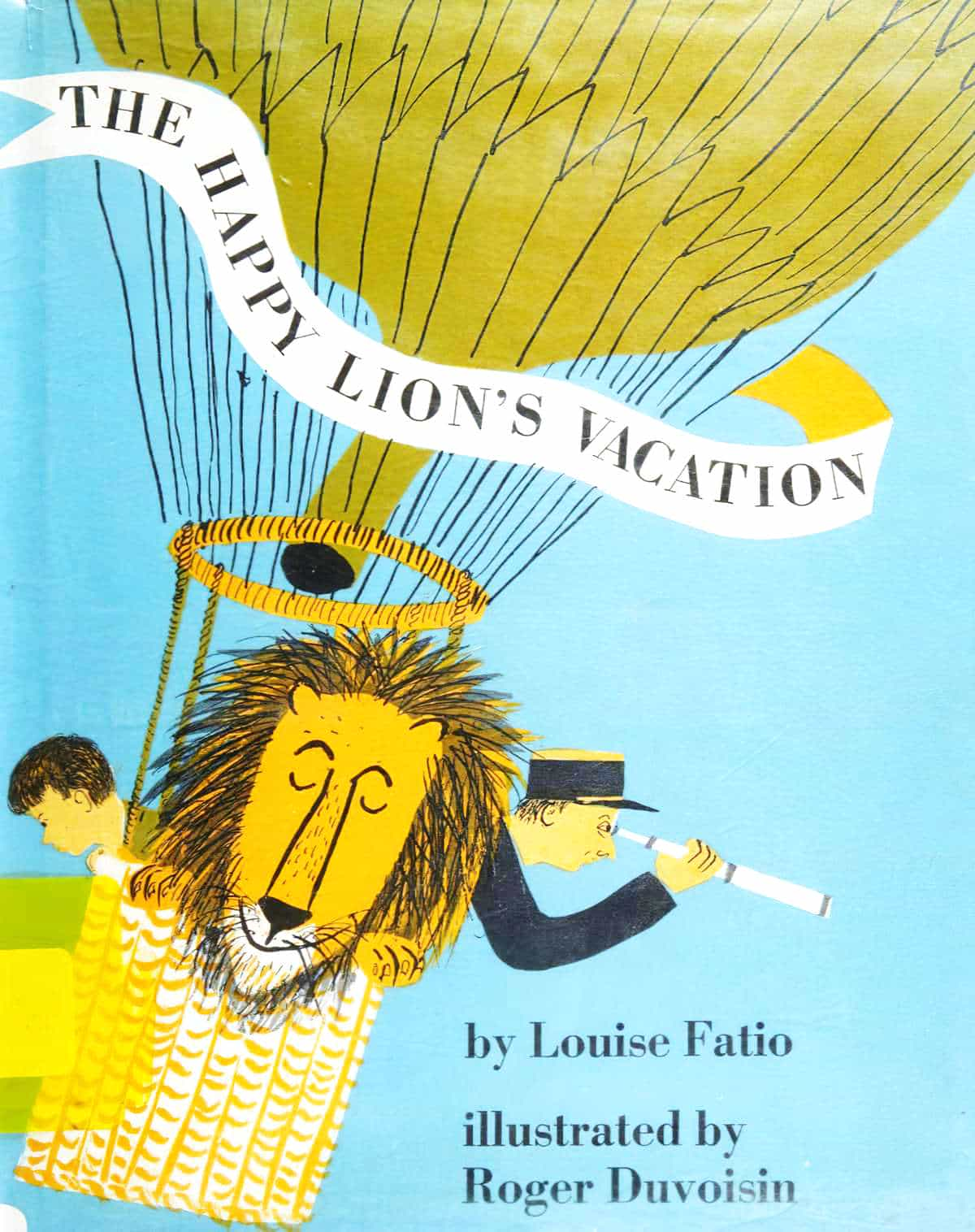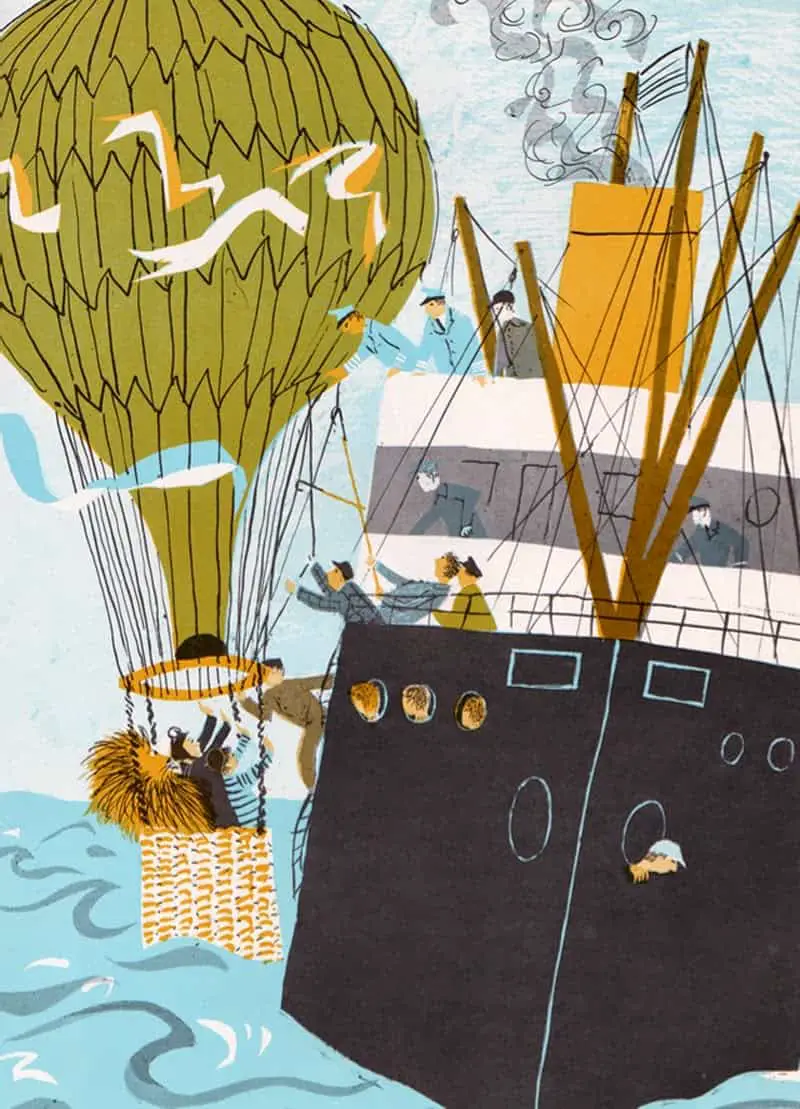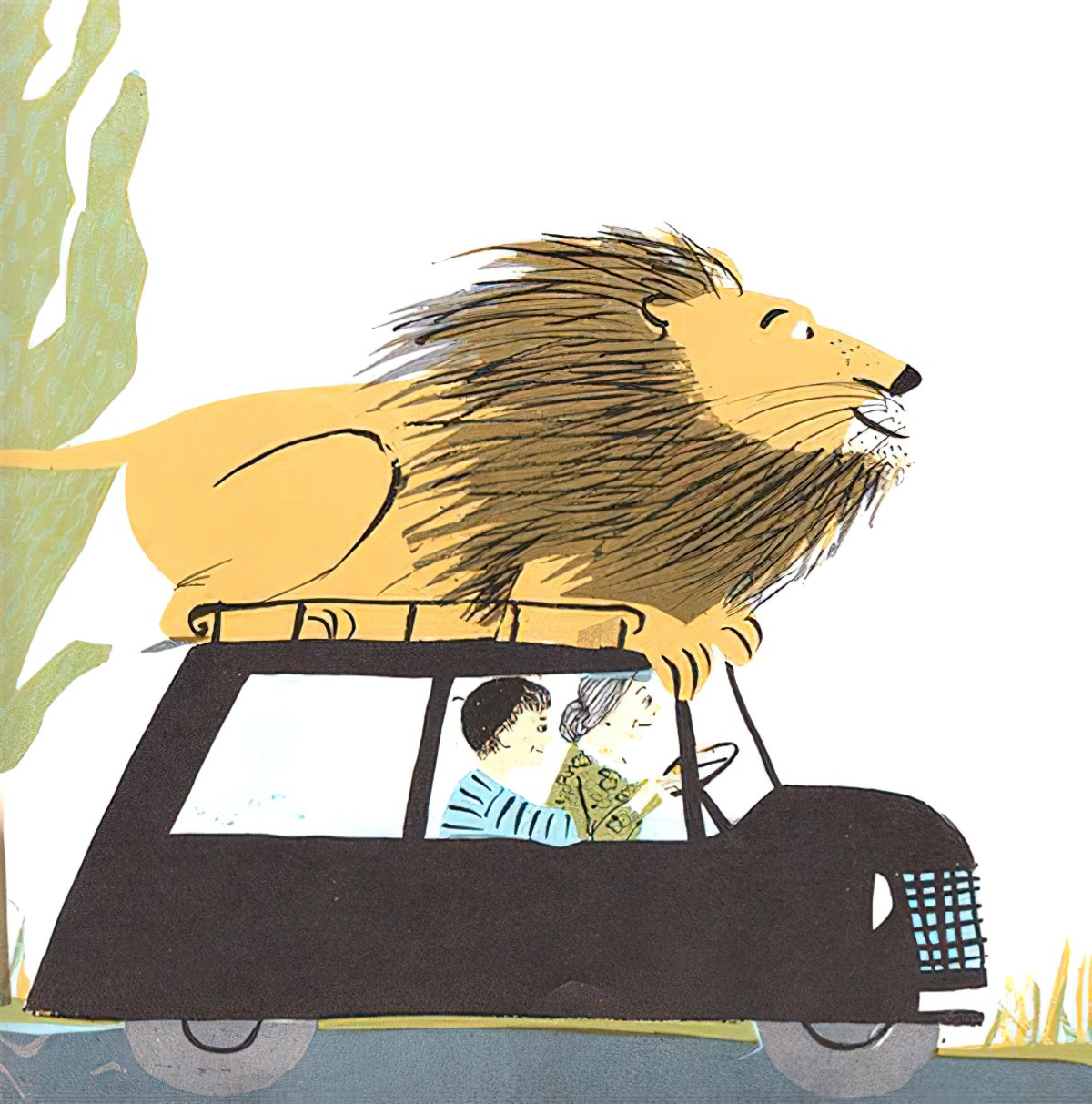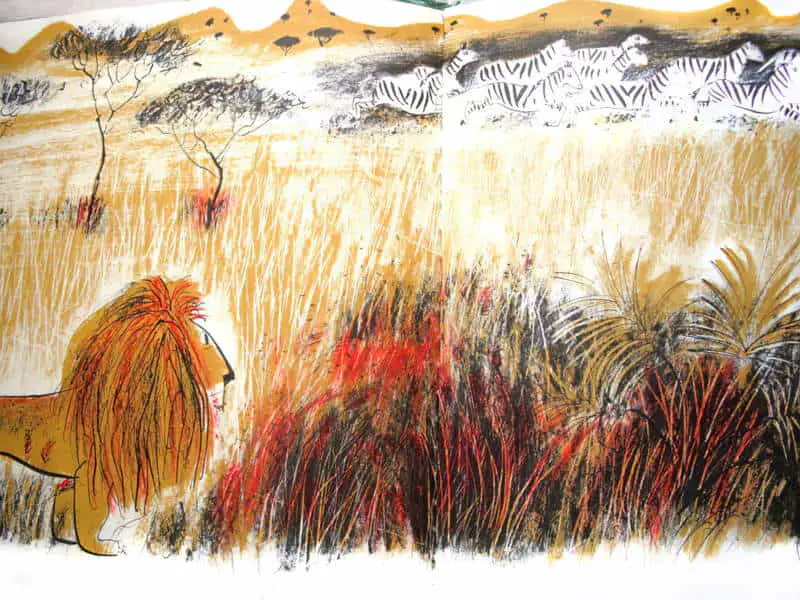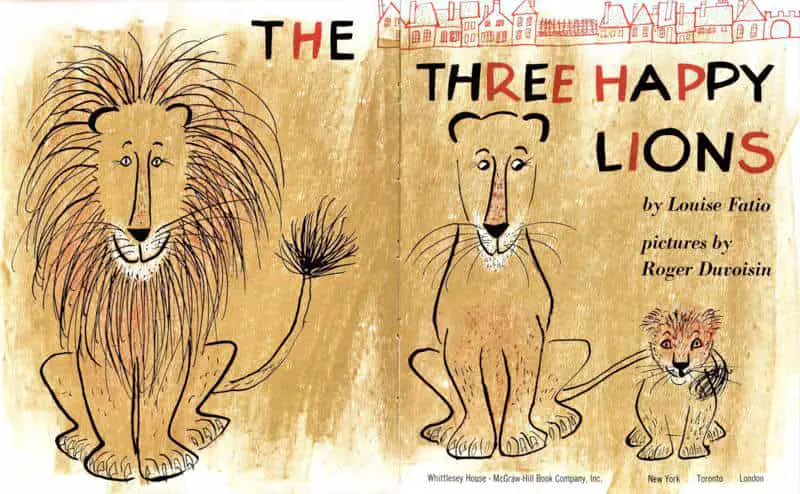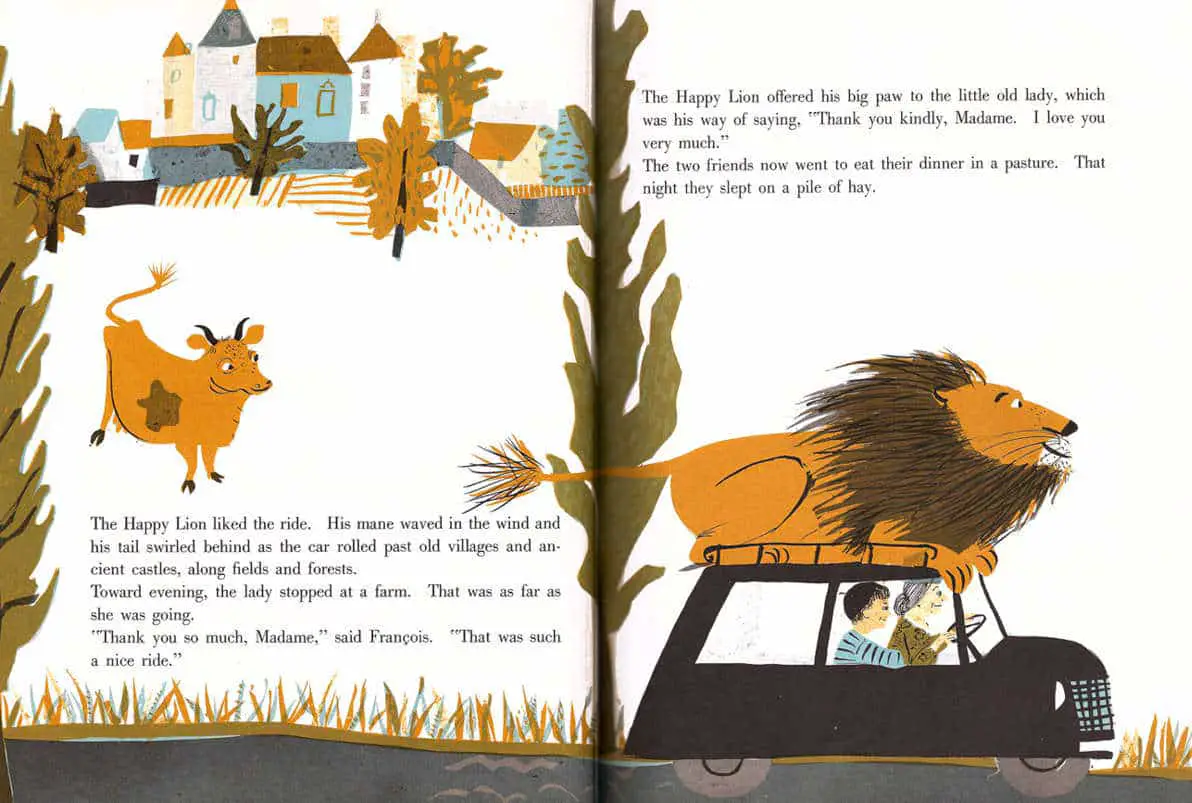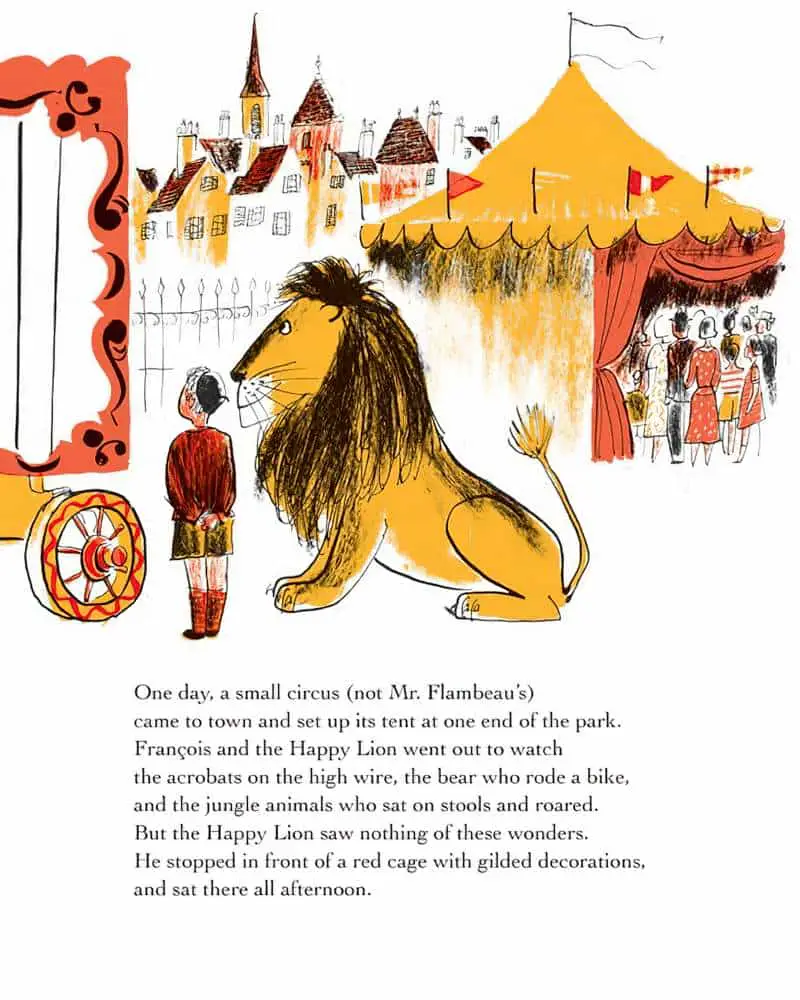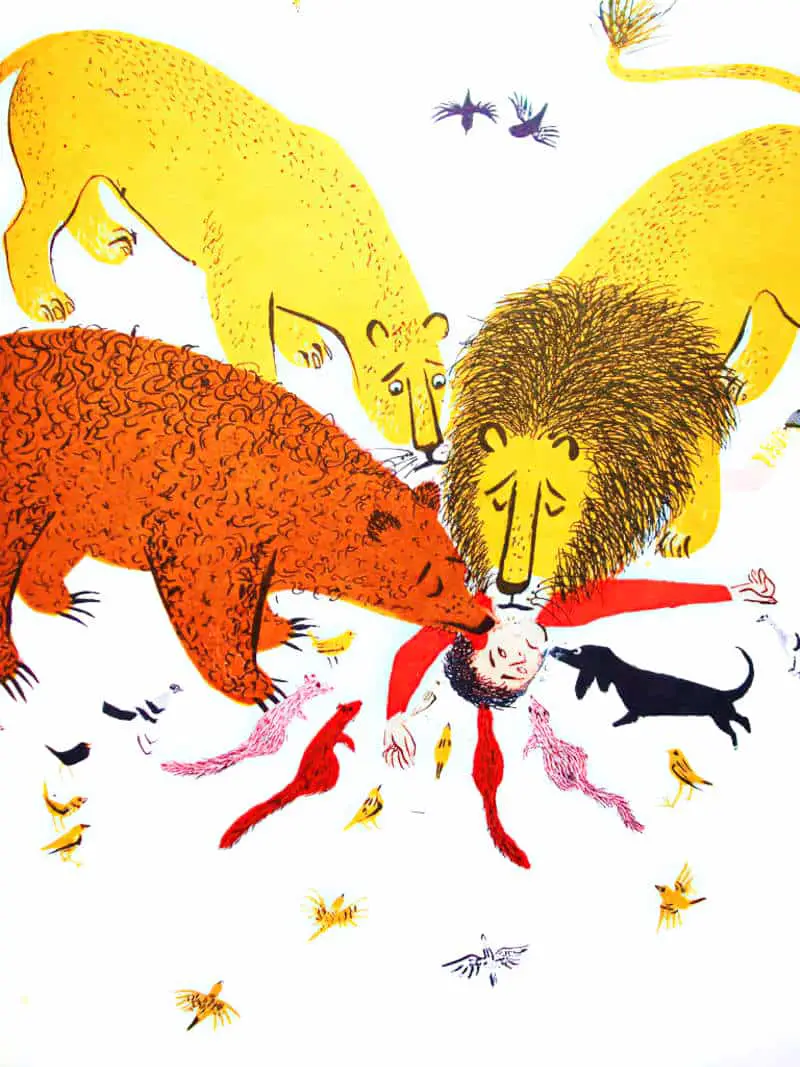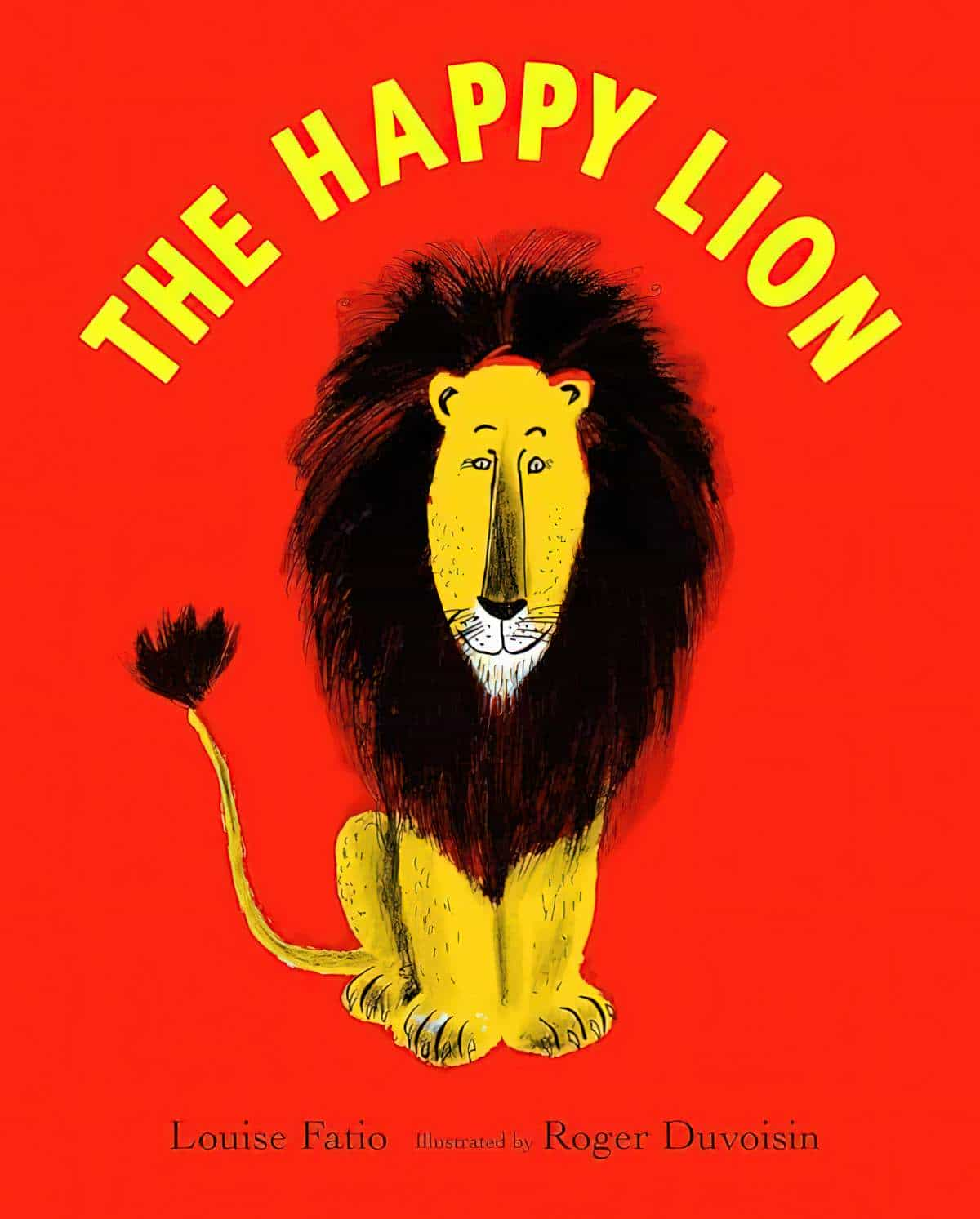The Happy Lion picture books were written by Swiss author Louise Fatio (1904-1993) and illustrated by Swiss-born American husband, well-known artist Roger Duvoisin (1900-1980).
In this initial story, a lion is trapped — sorry, housed — inside a French zoo. Of all the animals, the Happy Lion is the most popular with zoo visitors because he is so cheerful.
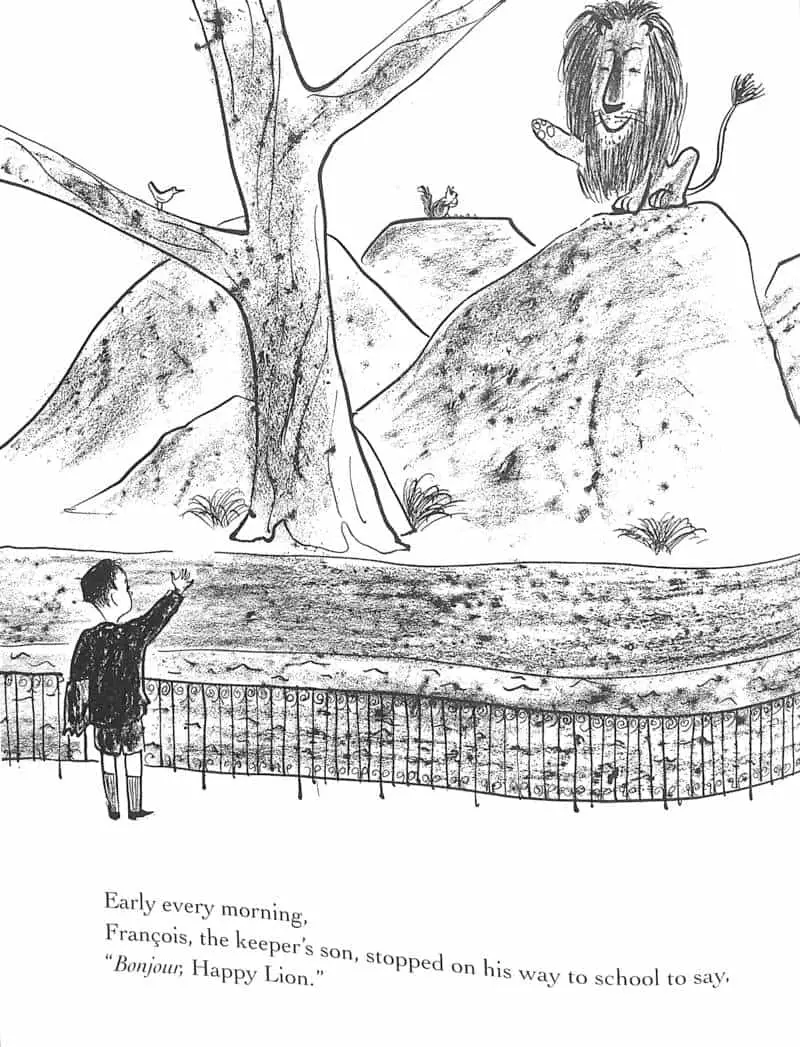
This is exactly what we’d expect from a post-WW2 picture book. The parents of baby boomers experienced collective trauma and their children had the job of appearing constantly cheerful. Children were the future, dammit. Picture book characters modelled the cheerfulness which was expected — nay, required — of young baby boomer children.
No surprise, then, that this cheerful picture book was especially popular in Germany. The Happy Lion won the inaugural German Book Prize in 1956.
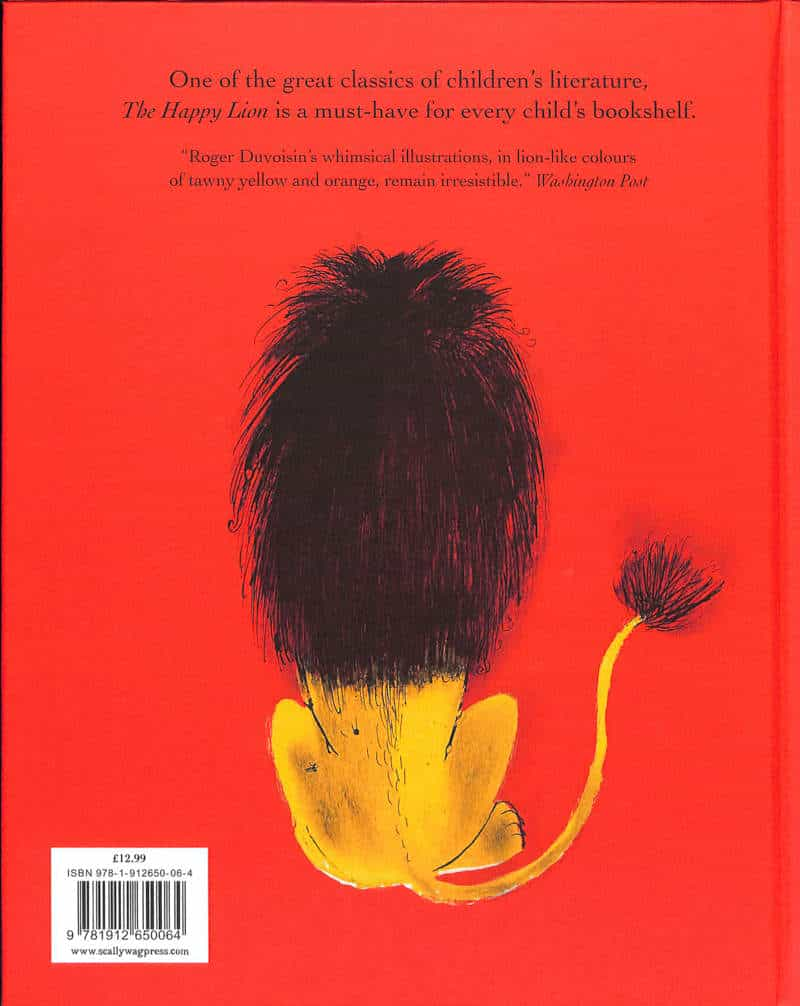
Every day, people would stop by at the zoo, feed The Happy Lion tidbits. “Bonjour, Happy Lion!”
But was he really that happy? I put it to you that a lion who takes the first opportunity to escape when the door to his cage is accidentally left open wasn’t all that happy to be there after all.
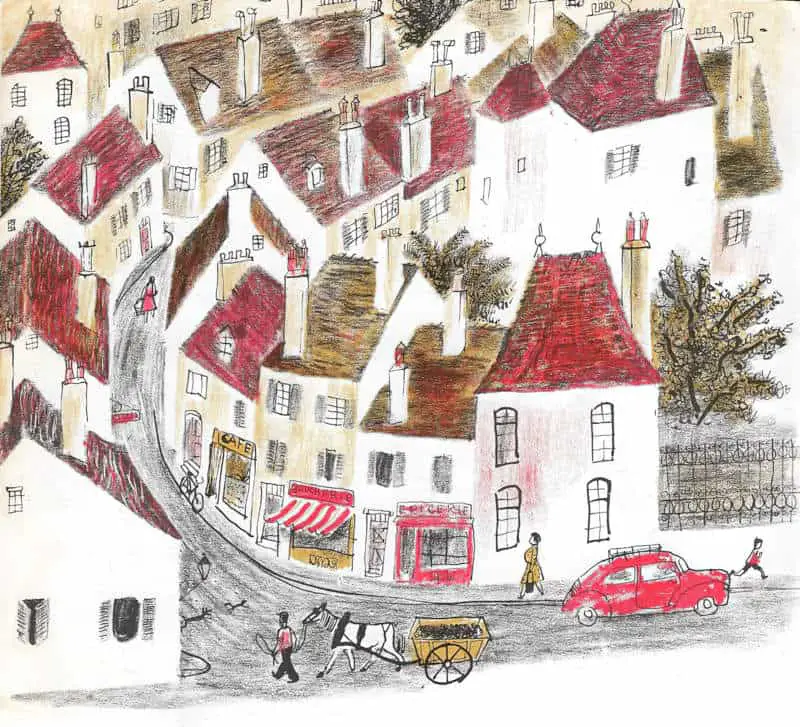
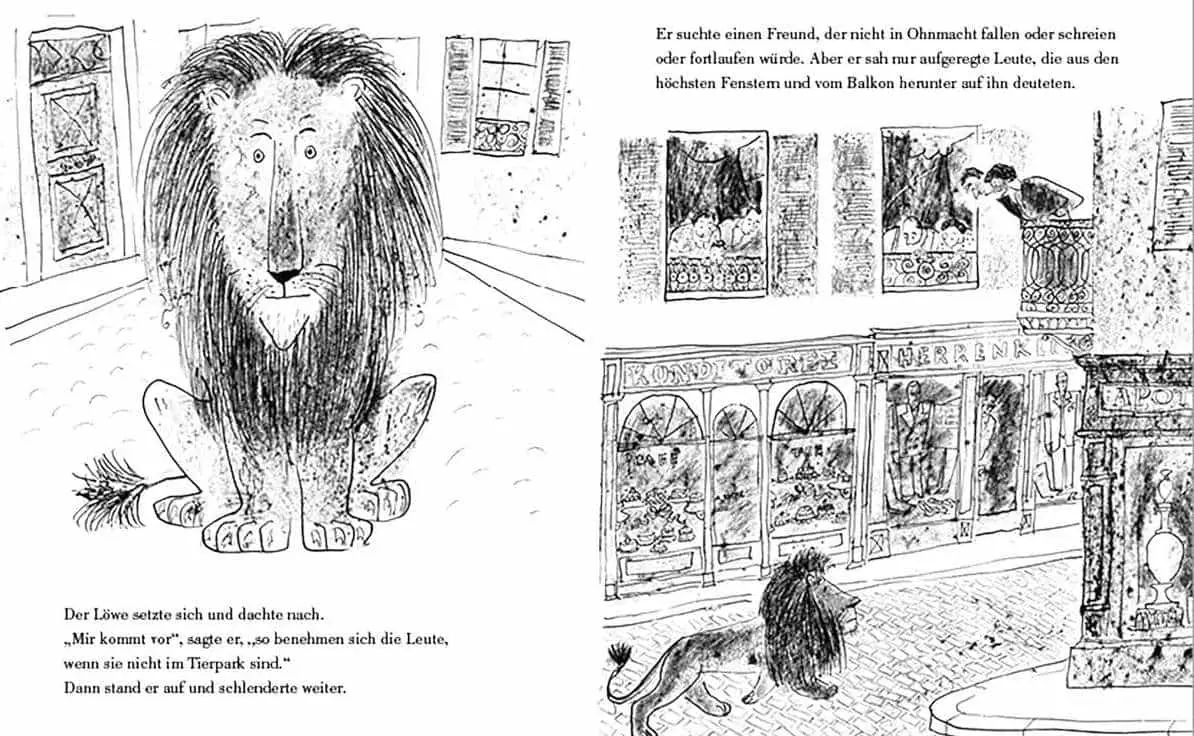
The lion means no harm. Once he is out of his cage, he plans to stop in and see the townspeople as they stopped in to see him. Perhaps they’ll offer him some tea? No wait, that’s a different picture book.
However much they like to see lions behind bars, the townspeople aren’t so pleased to see a lion on the loose.
Every now and then an apex predator does escape from a zoo, and this is what happens:
- In Sydney: Roar footage: Taronga zoo releases video of lions escaping from their Sydney enclosure. This story went international. Clientele were having a zoo sleepover at a “Roar and Snore” event.
- In Italy: Escaped lion enjoys rest after night out in Italian town as circus trainer suspects foul play
There’s something to be said here about how humans can appear very kind to others so long as there’s a cage — or an invisible (structural) cage — keeping certain populations — perceived as dangerous — at arm’s length. Detention centres. Drug addicts behind bars. Ghettoized areas of towns.
The Happy Lion also belongs to a genre of mid-century picture books which present the wild as toxically dangerous to wild creatures, and the zoo — in contrast — as a kind of utopia where wild animals can live happy, safe and admired by humans. (Anthony Browne subverted this messaging in 1992 with his postmodern picture book Zoo.)
The story is a carnivalesque tale in which order is temporarily overturned. Humour derives from the ironic distance between the terrified townspeople and the confused but friendly lion, who can’t work out why everyone is running in the opposite direction. The jaunt ends when a gang of firemen roll up in a van and prepare to hose the lion into submission.
A lone boy is not afraid to approach the lion. He puts his hand on the lion’s great mane and invites the lion back to the zoo. The Lion, The Witch and the Wardrobe was published in 1950. The Lion in both stories are friendly and benign Jesus figures, very powerful but choosing not to be for the sake of humankind.

The Happy Lion is very happy to be forced back into his cage and from now on he gets the best tidbits. He likes his rock garden even better than before.
Frankly, it sounds terrible and I don’t know how the story was persuasive even in 1967. But it was!
Titles in the Happy Lion series
Scallywag Press reprinted the series with mostly red covers. The original editions are hard to come by now.
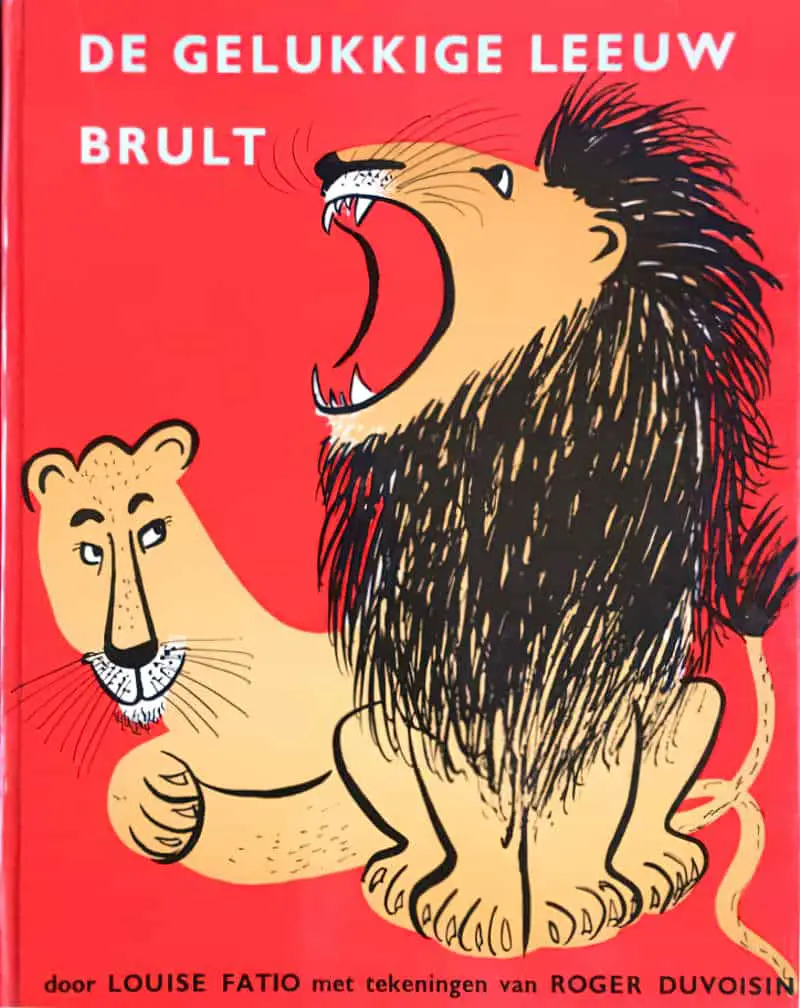
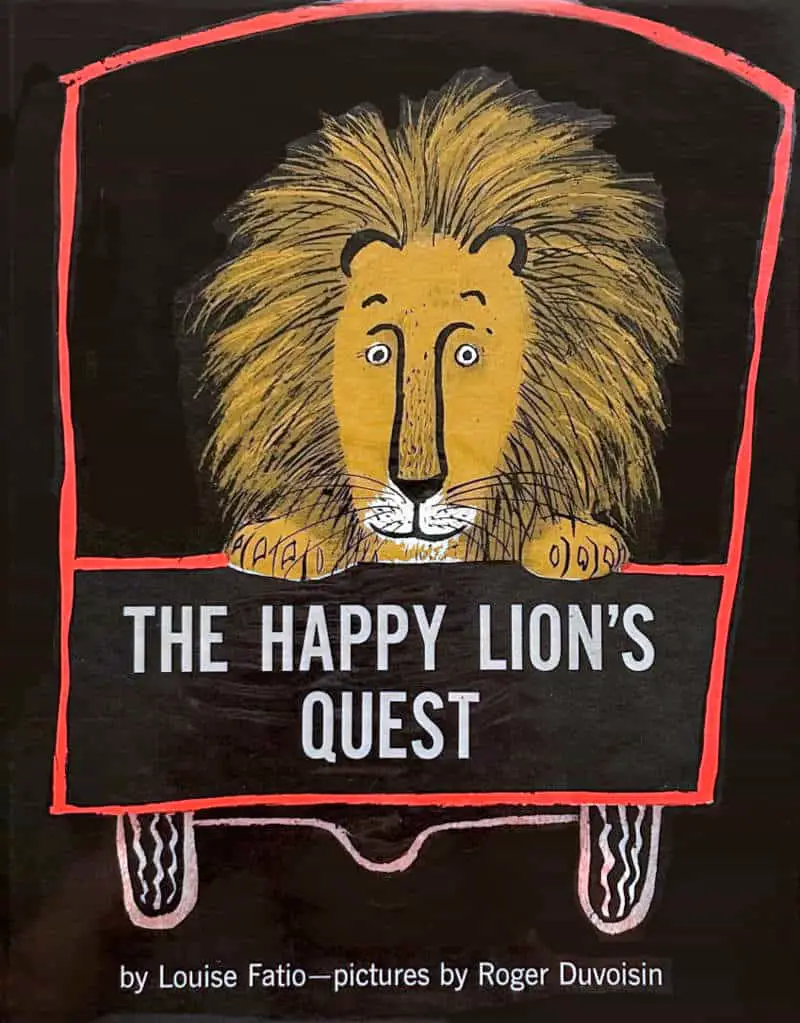
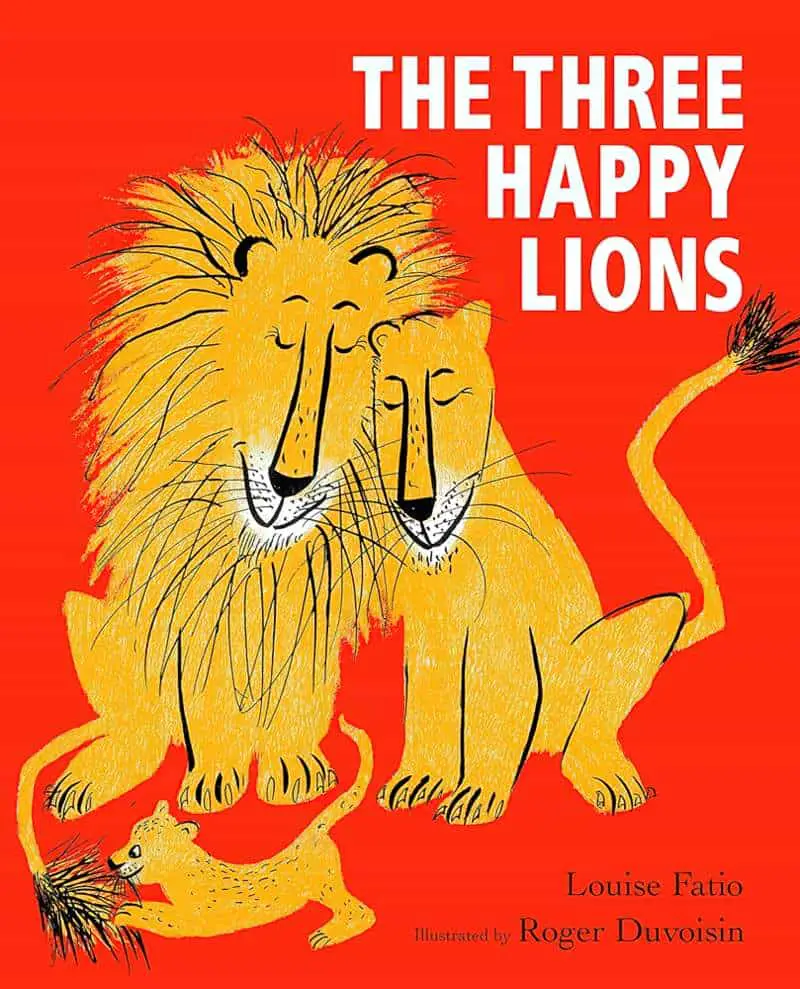
- The Happy Lion (1955)
- The Happy Lion Roars (1957)
- The Three Happy Lions (1959)
- Happy Lion in Africa (1961)
- The Happy Lion and the Bear (1964)
- The Happy Lion’s Vacation (1967)
- The Happy Lion’s Treasure (1970)
- The Happy Lion’s Rabbits (1974) — part of The Tawny, Scrawny Lion hippie movement in which lions and rabbits get along just fine, no doubt
- The Three Happy Lions (1975)
- The Happy Lioness (1980)
